Jun
23
2023

RFK Jr., who is now running for the Democratic presidential nomination, is anti-vaccine. He will vehemently deny this, but I don’t buy it for a second. He is simply playing the, “I’m not anti-vaccine, I am pro-safe vaccine” gambit, which is disingenuous and always has been. We have been covering this topic for years, and David Gorski did a recent excellent review of this at SBM. You can’t claim not to be anti-vaccine, and then defend a long list of anti-vaccine tropes.
RFK has apparently been avoiding his views on vaccines on the campaign trail, but it always seems to come up. On the Joe Rogan podcast RFK found what he must have thought was a friendly environment, and felt free to repeat is claim that vaccine cause autism. This is a topic I have been covering for two decades – vaccines do not cause autism. But let’s do a quick review of this harmful claim.
This first appeared in the 1990, when the anti-vaccine movement hit upon the increase in autism diagnoses as a new tactic. They start with the assumption that all bad things that happen to children are caused by vaccines, so obviously they must also be causing the rise in autism. When Andrew Wakefield came out with his fraudulent and now retracted study claiming an association between the MMR vaccine and autism, he became an instant celebrity of the anti-vaccine movement. Trouble is – the MMR vaccine does not cause autism. Wakefield, it turns out, had a patent on an alternative vaccine and was trying to torpedo the competition. But the anti-vaccine movement does not let science, evidence, or basic logic get in their way. So they simply moved over to a vaccine ingredient, thimerosal, which is a mercury-based preservative.
Continue Reading »
Jan
19
2023

SBM will be hosting a viewing of a new documentary – Virulent: The Vaccine War. This will be followed by a Q&A with me, David Gorski, and the film producers. This is a virtual screening so you can watch it anytime between now and January 29th. The Q&A will start on Sunday, 1/29, at 7 pm.
Here is a link to the event page. We are asking for a donation of $12.50. This is an “early bird” rate, as on Tuesday, January 24, the price will increase to $15. Your donation will support grassroots screenings like this one to build awareness and demonstrate to public TV & educational distributors that there is an audience for the film.
For more more information, you can read the announcement on SBM.
Jun
27
2022
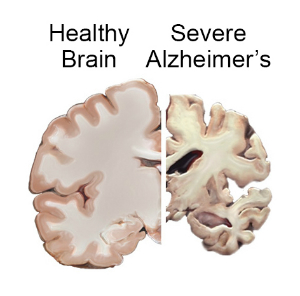 A recent large population-based study shows a significant reduction in the risk of developing Alzheimer’s disease (AD) in older adults who received one or more flu vaccines. This follows previous studies showing a similar protective effect for other adult vaccines, and raises interesting questions regarding possible mechanisms.
A recent large population-based study shows a significant reduction in the risk of developing Alzheimer’s disease (AD) in older adults who received one or more flu vaccines. This follows previous studies showing a similar protective effect for other adult vaccines, and raises interesting questions regarding possible mechanisms.
AD is a degenerative neurological disease which is the most common cause of dementia, which is a syndrome of chronic global cognitive impairment. The prevalence of AD is about 6.5 million people in the US. The risk of developing AD increases with age, with 10.7% of those 65 and older being affected. AD is more than just having dementia, it is a specific disease that can only be confirmed at this time by looking at the brain. There are pathological changes including plaques and tangles. Imaging can also reveal diffuse cortical atrophy (shrinkage of the brain). Electroencephalogram typically shows slowing, indicating reduced cortical activity. There are many markers of AD that can be identified in the blood or spinal fluid, but none are good enough to be used in routine clinical evaluation.
The causes of AD are complex and not yet fully understood. In brief, a lot of stuff happens on the way towards brain cells dying but it’s hard to known which stuff is driving the process and which are a result of the process. It therefore has been difficult to device treatments to slow or prevent progression. For my entire career as a neurologist it seemed as if we were getting close to a significant clinical breakthrough, but we’re still waiting. Tremendous progress has been made, but nothing that amounts to a disease-modifying treatment.
Prevention before the disease becomes clinically apparent would be ideal. We know that controlling blood pressure and other markers of cardiovascular health are extremely important in reducing the risk of AD. We also know that physical exercise is important, as well as keeping mentally active. Sometimes, however, it is difficult to separate preventive measures that actually delay or slow the onset of AD vs those that mask the onset through creating a higher baseline of cognitive function. Regardless, all of the above are good lifestyle choices.
Continue Reading »
Jul
20
2021
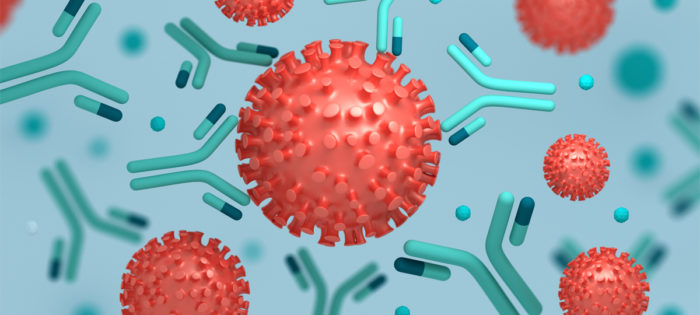 In February on SBM I wrote about the Race Against Vaccine Hesitancy. At that point in time the pandemic was receding in the US in the face of a rapid vaccination program, but also the first new variants of SARS-CoV-2 were starting to appear. Essentially I argued that we were in a race between achieving herd immunity and the spread of new variants that might be more contagious or even vaccine resistant. Experts believed that we would know the answer by Summer.
In February on SBM I wrote about the Race Against Vaccine Hesitancy. At that point in time the pandemic was receding in the US in the face of a rapid vaccination program, but also the first new variants of SARS-CoV-2 were starting to appear. Essentially I argued that we were in a race between achieving herd immunity and the spread of new variants that might be more contagious or even vaccine resistant. Experts believed that we would know the answer by Summer.
Well, Summer is here, and the answer is in. We lost the race. Vaccine hesitancy won.
This doesn’t mean that the vaccination program has not been massively helpful. It has. As of now 48.6% of the US population is fully vaccinated, with 56.1% having received at least one dose. This includes children under 12, however, who are not currently eligible for any vaccine. A total of 68.3% of adults have been vaccinated, close to the 70% goal set by the Biden administration. From a logistical perspective, this is a success. The program peaked at over 3 million doses given per day. The program meant that the limiting factor was not the availability of vaccines or the ability to distribute and administer them. The limiting factor is people willing to get vaccinated.
While we may have come close, we did not achieve sufficient herd immunity. Part of the problem is that the vaccinated are not evenly distributed throughout the population. Vaccine uptake is patchy, which means there are clusters of unvaccinated people where the virus is free to spread. Arkansas, for example, is only at 35% fully vaccinated.
Continue Reading »
May
07
2021
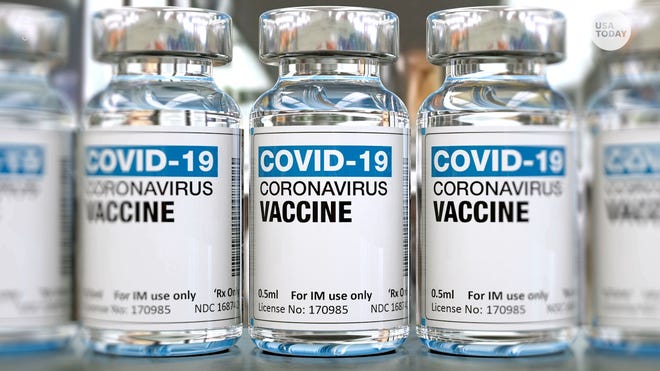 We are at a critical point in this pandemic. Worldwide the pandemic is actually more active now than ever. There have been over 156 million cases, and the world is seeing almost 800k new cases a day. The recent peak is mainly due to India, but infections continue throughout the world. The high number of cases also increases the risk of new variants emerging. India also shows us how quickly medical resources can be overwhelmed with catastrophic results. They ran out of oxygen – which is critical to keeping severe COVID patients alive.
We are at a critical point in this pandemic. Worldwide the pandemic is actually more active now than ever. There have been over 156 million cases, and the world is seeing almost 800k new cases a day. The recent peak is mainly due to India, but infections continue throughout the world. The high number of cases also increases the risk of new variants emerging. India also shows us how quickly medical resources can be overwhelmed with catastrophic results. They ran out of oxygen – which is critical to keeping severe COVID patients alive.
Yet, with each wave there was the prevailing sense that this was the worst we’ll get, and now we are rounding the corner. So far, this has been wrong every time. Of course this pandemic must end eventually, the question has always been how much death, morbidity, and economic damage would it cause in the meantime. The primary reason for the next worse wave of the pandemic has largely been that people eased off on pandemic protocols. They stopped wearing masks and social distancing and started gathering in large groups. And each time the virus made us pay for it.
But now, despite being in the middle of the biggest wave so far, the situation is changing, because now we have multiple safe and effective vaccines. In the US there are two mRNA vaccines, from Moderna and Pfizer-BioNTech, in addition to the J&J vaccine. Other than a minor hiccup with extremely rare blood clots, these vaccines have a great safety profile. In states with high vaccine uptake the virus is getting under control, and restrictions are starting to be safely lifted. Life is partly getting back to normal – thanks entirely to the vaccines.
But we are facing two problem – entirely of our own making. The first is that we are in a race against time. We have to vaccinate enough of the world to achieve herd immunity before new variants emerge that are resistant to the vaccines. Also, we don’t know how long immunity from the vaccines last, but it may be something around a year. So when we get to a year out from the first vaccines given, we need to do it all over again with booster shots. Perhaps even more importantly, we are running up against vaccine hesitancy, which may ultimately prevent us from getting to herd immunity. That would be a tragedy.
Continue Reading »
Apr
15
2021
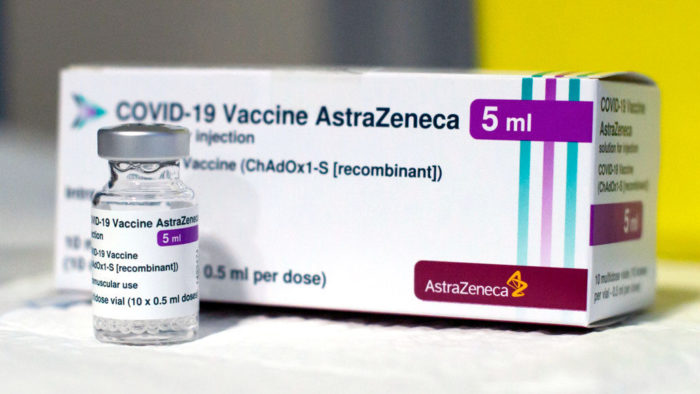 As the COVID vaccine rollout continues at a feverish pace, the occurrence of rare but serious blood clots associated with two adenovirus vaccines, AstraZeneca and Johnson & Johnson, is an important story, and should be covered with care and thoughtfulness. I have followed this story on Science Based Medicine here, here, and here. There is a lot of nuance to this issue, and it presents a clear dilemma. The ultimate goal is to optimally balance risk vs benefit while we are in the middle of a surging pandemic and while information is preliminary. This means we don’t panic, we consider all options, and we investigate thoroughly and transparently. There is a real debate to be had about how best to react to these rare cases, and as a science communicator I have tried to present the issues as reasonably as possible.
As the COVID vaccine rollout continues at a feverish pace, the occurrence of rare but serious blood clots associated with two adenovirus vaccines, AstraZeneca and Johnson & Johnson, is an important story, and should be covered with care and thoughtfulness. I have followed this story on Science Based Medicine here, here, and here. There is a lot of nuance to this issue, and it presents a clear dilemma. The ultimate goal is to optimally balance risk vs benefit while we are in the middle of a surging pandemic and while information is preliminary. This means we don’t panic, we consider all options, and we investigate thoroughly and transparently. There is a real debate to be had about how best to react to these rare cases, and as a science communicator I have tried to present the issues as reasonably as possible.
But we no longer live in an age where most people get most of their science news from edited science journalists. Most get their news online, from a range of sources, some good, some bad, some acting in bad faith or filtered through an intense ideological filter, and many just trolling. There are even “pseudojournalists” out there, reporting outside any kind of serious review. One such pseudojournalist is Paul Thacker, who recently decided he had to criticize the reporting of “skeptics” on the COVID vaccine blood clotting issue.
For background, Thacker was fired from the journal Environmental Science & Technology for showing an anti-industry bias. Bias is a bad thing in journalism, the core principle of which is objectivity. I have no idea if Thacker honestly believes what he writes or if he can’t resist trolling, but it doesn’t really matter. He has espoused anti-GMO views to the point of harassing GMO scientists, leading Keith Kloor to call him a “sadistic troll”. Thacker has also promoted 5g conspiracy theories.
Continue Reading »
Jan
19
2021
 This was inevitable. We are in the midst of a massive rollout of two new vaccines for COVID-19. Anxiety and fatigue levels from the pandemic are already running high, and there is a pre-existing anti-vaccine movement who is sure to exploit this. But perhaps most significantly, we are now living in a post-social media world. Information, even medical or scientific information, may get to the public unfiltered, ripe to be misinterpreted by people who do not understand the relevant science. Such is the case with a “viral” video showing a woman who claims her symptoms are a side effect of the Moderna vaccine (short answer – they almost certainly are not).
This was inevitable. We are in the midst of a massive rollout of two new vaccines for COVID-19. Anxiety and fatigue levels from the pandemic are already running high, and there is a pre-existing anti-vaccine movement who is sure to exploit this. But perhaps most significantly, we are now living in a post-social media world. Information, even medical or scientific information, may get to the public unfiltered, ripe to be misinterpreted by people who do not understand the relevant science. Such is the case with a “viral” video showing a woman who claims her symptoms are a side effect of the Moderna vaccine (short answer – they almost certainly are not).
Messaging is critical to the success of public health measures. Normally information about possible side effects from a drug or vaccine would be filtered through medical experts. When millions of people are involved there is going to be a lot of noise. Coincidence alone would result in many negative outcomes occurring by chance alone shortly after getting a vaccine. Epidemiologists need to look for patterns in the data that indicate there is likely to be an actual causal relationship to the vaccine. It helps if there is also a plausible mechanism. This system has captured vaccine side effects in the past, so you cannot reasonably argue that the system is rigged not to find such associations. The swine flu vaccine in the 1970s caused cases of Guillaine Barre Syndrome. A specific flu vaccine (Pandemrix – no longer on the market) likely caused cases of narcolepsy in 2009. So if any of the current COVID vaccines have a similar side effect, we will catch it.
Reporting scary anecdotes that have not been scientifically evaluated to the public is not a good idea. This is likely to misinform rather than inform, and will have a death toll attached to it. But with social media there is no way to stop this from happening, so we just have to do damage control when it does.
As a side note, I have to point out that I usually refrain from commenting on a specific individual’s medical condition in public. This is to respect the privacy of those individuals, and also because if I have not personally examined them and taken their history, commenting is inappropriate. But medical science communicators can comment about topics relevant to a public case or issue. I can speak generally about the relevant topics. There is also an exception when a private person puts their own medical history into the public domain, especially if they also use that history to make recommendations to the public, and doubly so if those recommendations are false and harmful. They have surrendered any expectation of privacy and they have made their own personal history relevant to the discussion about a public health issue. That is the case here.
Continue Reading »
Dec
17
2020
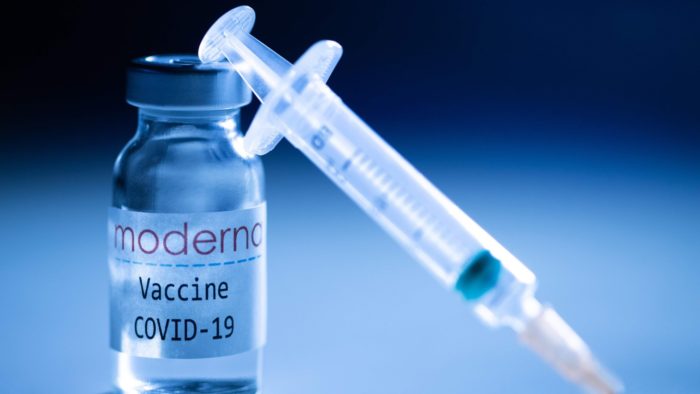 As the first crop of SARS-CoV-2 vaccines are being rolled out, we can start to see the light at the end of this pandemic tunnel. Still, in the US alone there will probably be another 200,000 deaths before we reach herd immunity. Further, as fast as this vaccine development and deployment was, it’s not clear how much faster it will bring an end to the pandemic. We will likely be 18 months into the pandemic before we have significant vaccine uptake, and that may not be far off from how long the pandemic was going to last in the first place. There is no doubt is will save lives and hasten the end, but still – only after we lost about half a million people to the virus.
As the first crop of SARS-CoV-2 vaccines are being rolled out, we can start to see the light at the end of this pandemic tunnel. Still, in the US alone there will probably be another 200,000 deaths before we reach herd immunity. Further, as fast as this vaccine development and deployment was, it’s not clear how much faster it will bring an end to the pandemic. We will likely be 18 months into the pandemic before we have significant vaccine uptake, and that may not be far off from how long the pandemic was going to last in the first place. There is no doubt is will save lives and hasten the end, but still – only after we lost about half a million people to the virus.
The question for the future, therefore, is this – is it possible to develop a vaccine even more quickly? What if we could get a vaccine out, soup to nuts, in just a couple of months. We could have ended the pandemic before it really began. The first shots could have been going out in March, protecting front-line workers and the most vulnerable. This would have dramatically slowed the spread while the general population got the vaccine. By now we would be at the tail end of distribution, not the beginning. The COVID pandemic which disrupted the world would have been more like a mild flu season.
Is this feasible? The answer is a definite yes. In fact, as is now being widely reported, it took Moderna just two days to develop their vaccine. They had the vaccine – in January. This is because Moderna has spent the last 10 years developing the mRNA vaccine technology that they used in their COVID vaccine. This, in fact, is the huge advantage of mRNA vaccines, and partly why this technology was being developed. It worked as designed. As soon as the Chinese government released the genetic sequence of the SARS-CoV-2 virus, that was all Moderna needed. They identified the sequence for the spike protein, plugged that into their vaccine platform, and voila – an mRNA vaccine against the SARS-CoV-2 virus. Actually, I’m sure it was more complex than that, but whatever the technical details, it took only two days. And the core idea here is valid – they really only needed the genetic sequence of the organism, which itself now can be done very quickly.
Continue Reading »
Dec
14
2020
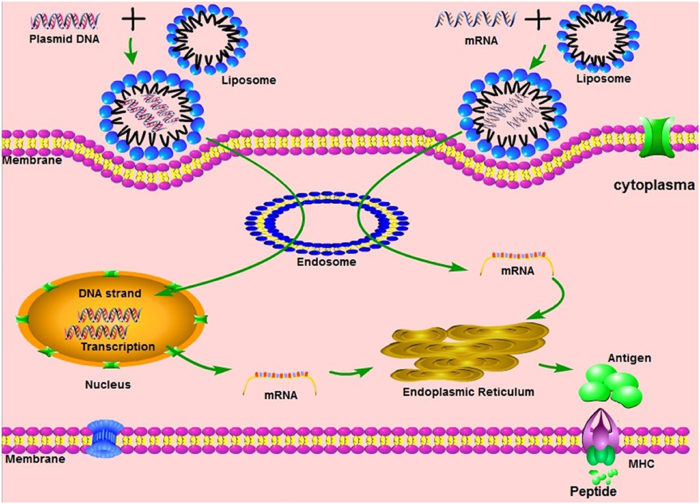 This week should see the first people in the US to actually receive an approved (at least EUA) vaccine to prevent SARS-CoV-2. There are three vaccines currently ready to go in the West, the Pfizer vaccine which received it’s EUA in the US on Friday and was already approved in the UK, Moderna which should get approval this week, and the Astra Zeneca vaccine which should not be too far behind. The (arguably) biggest challenge has been met – a massive scientific effort to develop vaccines in record time. This has been a collaboration between government and industry, and shows what we can accomplish with sufficient motivation (which translates into both money and easing red tape).
This week should see the first people in the US to actually receive an approved (at least EUA) vaccine to prevent SARS-CoV-2. There are three vaccines currently ready to go in the West, the Pfizer vaccine which received it’s EUA in the US on Friday and was already approved in the UK, Moderna which should get approval this week, and the Astra Zeneca vaccine which should not be too far behind. The (arguably) biggest challenge has been met – a massive scientific effort to develop vaccines in record time. This has been a collaboration between government and industry, and shows what we can accomplish with sufficient motivation (which translates into both money and easing red tape).
Now we have three further challenges in front of us. The companies need to mass produce their vaccines. This is happening with about 100 million doses ready to ship. We should have another 2 billion Pfizer doses by the end of 2021, and 1.5 billion Moderna doses. We also need to distribute the doses. This is happening through collaboration among FedEx, UPS, and the military who will get the doses to hospitals and physicians, who can then administer and track the doses. So far, so good.
The final hurdle, however, may prove the stickiest – we need people to accept the vaccine. In a December 9th survey by the AP-NORC, only 47% of Americans said they would get the vaccine, with 26% saying they would not, and 27% saying they are not sure. These and similar results have caused some to comment that the disinformation virus may prove deadlier than the COVID virus. We have a vaccine that can protect people from a deadly pandemic – this is a no-brainer. Resistance is partly due to a dedicated anti-vaccine movement that appears immune only to logic and evidence. We can only marginalize them. But these numbers go beyond the hard-core anti-vaxxers. People also fear what they don’t know, and these are the first mRNA vaccines to hit the market. So let’s review what these are, and the safety data.
Continue Reading »
Nov
24
2020
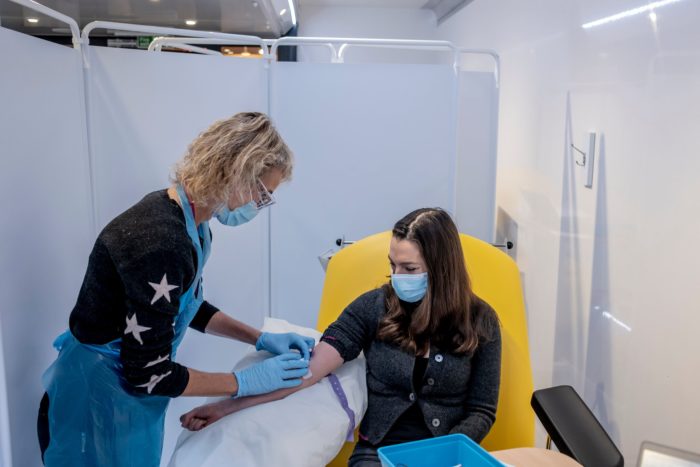 Two weeks ago Pfizer and German company BioNTech announced preliminary analysis of their phase 3 trial of an mRNA-based vaccine for SARS-CoV-2 showing it is 90% effective (later updated to 95%). One week ago Moderna announced that they too had promising results from their phase 3 trial, also an mRNA vaccine showing 95% efficacy. This week AstraZeneca announced they have developed a COVID vaccine as well (in partnership with Oxford University).
Two weeks ago Pfizer and German company BioNTech announced preliminary analysis of their phase 3 trial of an mRNA-based vaccine for SARS-CoV-2 showing it is 90% effective (later updated to 95%). One week ago Moderna announced that they too had promising results from their phase 3 trial, also an mRNA vaccine showing 95% efficacy. This week AstraZeneca announced they have developed a COVID vaccine as well (in partnership with Oxford University).
I have not discussed the AstraZeneca vaccine before, so here are the basic facts: “It uses a replication-deficient chimpanzee viral vector based on a weakened version of a common cold virus (adenovirus) that causes infections in chimpanzees and contains the genetic material of the SARS-CoV-2 virus spike protein.” In the study, overall there was a 70% efficacy in reducing symptomatic cases of COVID-19. However, in a subgroup analysis, those receiving a half dose followed by a full dose (instead of two full doses) had 90% efficacy, which is closer to the two mRNA vaccines. It is too early to say if this difference is real, and it does not make biological sense, so the company plans to expand the number of subjects getting this dosing regimen to see if the higher efficacy holds up. One advantage to this vaccine is that it can be stored in a regular refrigerator for up to 6 months, while the mRNA vaccines have to be frozen for transport (the Pfizer vaccine at -70 degrees C, the Moderna vaccine at -20).
All three vaccines have a good safety profile so far, but it always takes time to monitor for side effects so this is an ongoing assessment. Pfizer and Moderna say they can produce over a billion doses by the end of 2021, and AstraZeneca says they can produce 3 billion doses. That is enough for about a third of the world’s population. Of course, there are many other vaccines being developed around the world so these won’t be the only three.
Continue Reading »



 A
A  In February on SBM I wrote about the
In February on SBM I wrote about the We are at a critical point in this pandemic. Worldwide the pandemic is actually more active now than ever. There have been over 156 million cases, and the world is seeing almost 800k new cases a day. The recent peak is mainly due to India, but infections continue throughout the world. The high number of cases also increases the risk of new variants emerging. India also shows us how quickly medical resources can be overwhelmed with catastrophic results. They ran out of oxygen – which is critical to keeping severe COVID patients alive.
We are at a critical point in this pandemic. Worldwide the pandemic is actually more active now than ever. There have been over 156 million cases, and the world is seeing almost 800k new cases a day. The recent peak is mainly due to India, but infections continue throughout the world. The high number of cases also increases the risk of new variants emerging. India also shows us how quickly medical resources can be overwhelmed with catastrophic results. They ran out of oxygen – which is critical to keeping severe COVID patients alive. As the COVID vaccine rollout continues at a feverish pace, the occurrence of rare but serious blood clots associated with two adenovirus vaccines, AstraZeneca and Johnson & Johnson, is an important story, and should be covered with care and thoughtfulness. I have followed this story on Science Based Medicine
As the COVID vaccine rollout continues at a feverish pace, the occurrence of rare but serious blood clots associated with two adenovirus vaccines, AstraZeneca and Johnson & Johnson, is an important story, and should be covered with care and thoughtfulness. I have followed this story on Science Based Medicine  As the first crop of SARS-CoV-2 vaccines are being rolled out, we can start to see the light at the end of this pandemic tunnel. Still, in the US alone there will probably be another 200,000 deaths before we reach herd immunity. Further, as fast as this vaccine development and deployment was, it’s not clear how much faster it will bring an end to the pandemic. We will likely be 18 months into the pandemic before we have significant vaccine uptake, and that may not be far off from how long the pandemic was going to last in the first place. There is no doubt is will save lives and hasten the end, but still – only after we lost about half a million people to the virus.
As the first crop of SARS-CoV-2 vaccines are being rolled out, we can start to see the light at the end of this pandemic tunnel. Still, in the US alone there will probably be another 200,000 deaths before we reach herd immunity. Further, as fast as this vaccine development and deployment was, it’s not clear how much faster it will bring an end to the pandemic. We will likely be 18 months into the pandemic before we have significant vaccine uptake, and that may not be far off from how long the pandemic was going to last in the first place. There is no doubt is will save lives and hasten the end, but still – only after we lost about half a million people to the virus. This week should see the first people in the US to actually receive an approved (at least EUA) vaccine to prevent SARS-CoV-2. There are three vaccines currently ready to go in the West, the Pfizer vaccine which received it’s EUA in the US on Friday and was already approved in the UK, Moderna which should get approval this week, and the Astra Zeneca vaccine which should not be too far behind. The (arguably) biggest challenge has been met – a massive scientific effort to develop vaccines in record time. This has been a collaboration between government and industry, and shows what we can accomplish with sufficient motivation (which translates into both money and easing red tape).
This week should see the first people in the US to actually receive an approved (at least EUA) vaccine to prevent SARS-CoV-2. There are three vaccines currently ready to go in the West, the Pfizer vaccine which received it’s EUA in the US on Friday and was already approved in the UK, Moderna which should get approval this week, and the Astra Zeneca vaccine which should not be too far behind. The (arguably) biggest challenge has been met – a massive scientific effort to develop vaccines in record time. This has been a collaboration between government and industry, and shows what we can accomplish with sufficient motivation (which translates into both money and easing red tape). Two weeks ago
Two weeks ago 




